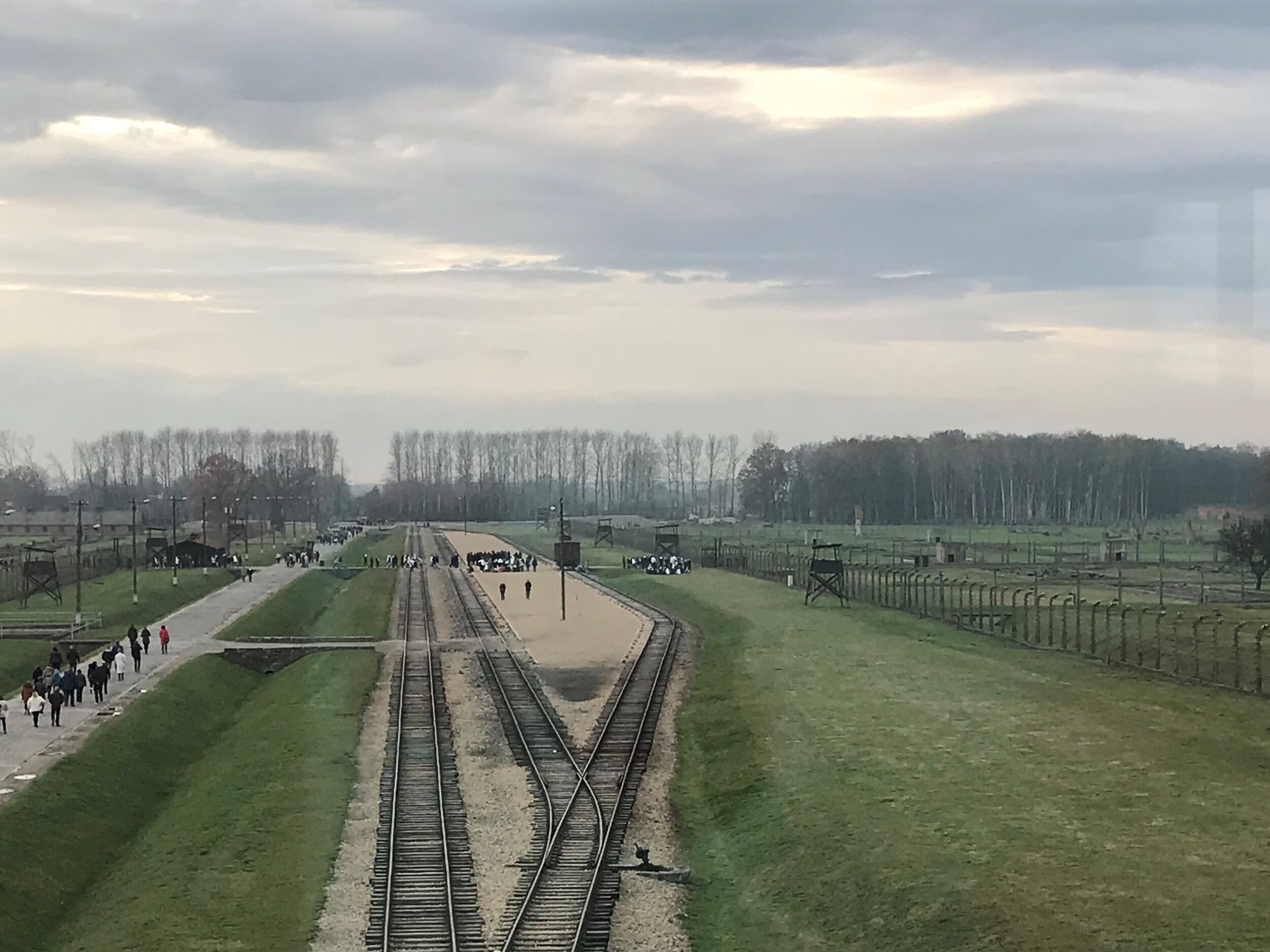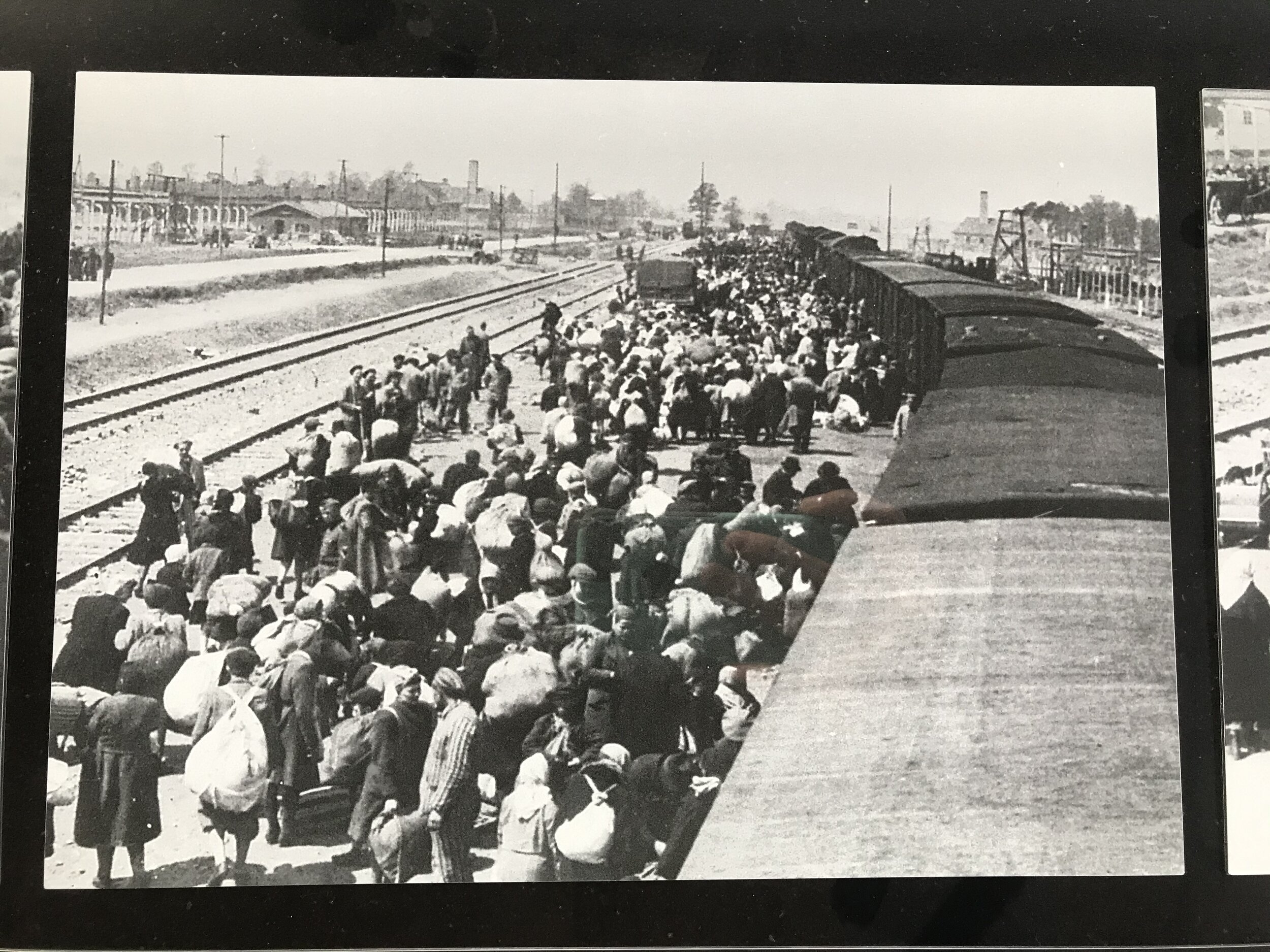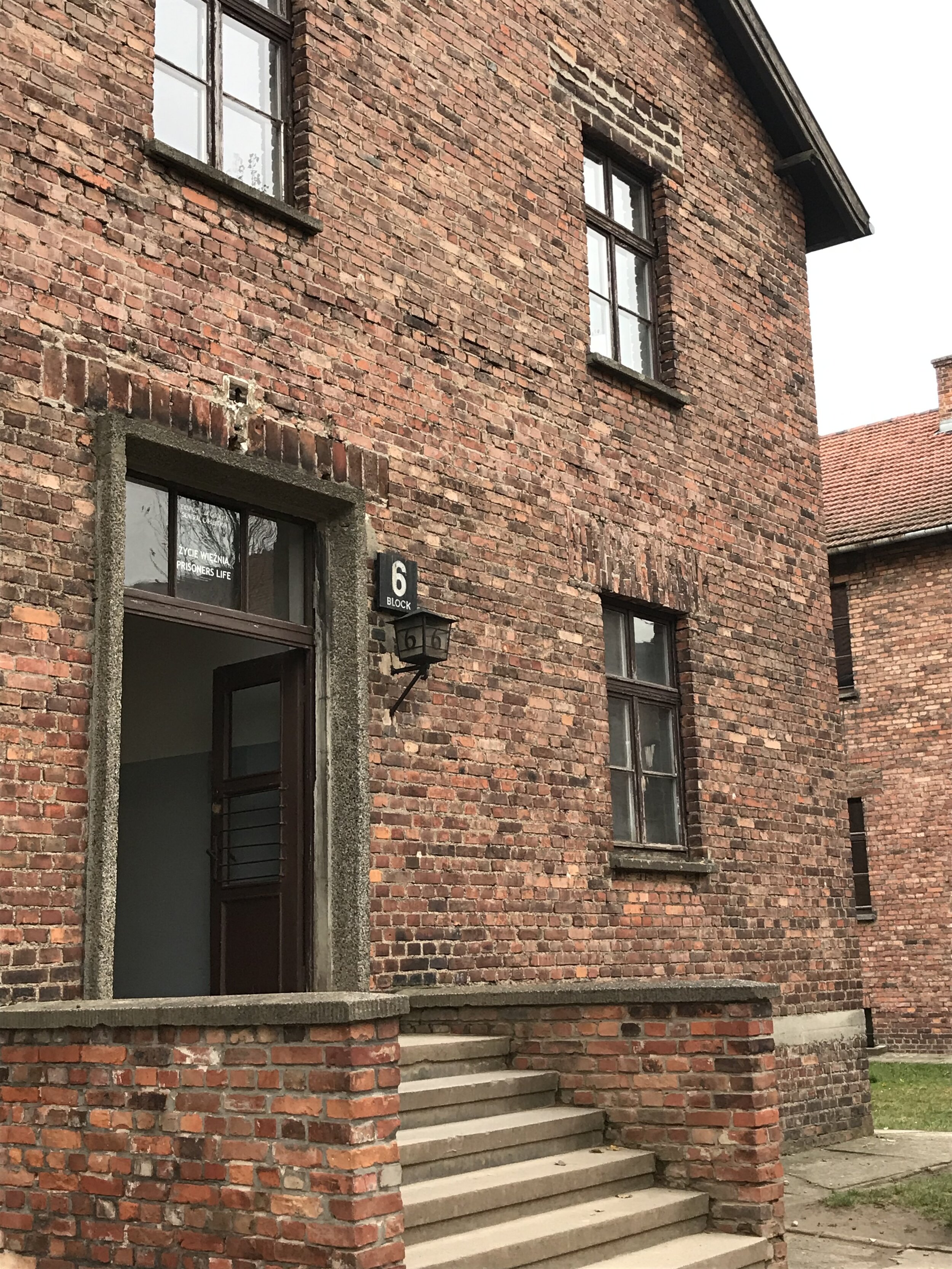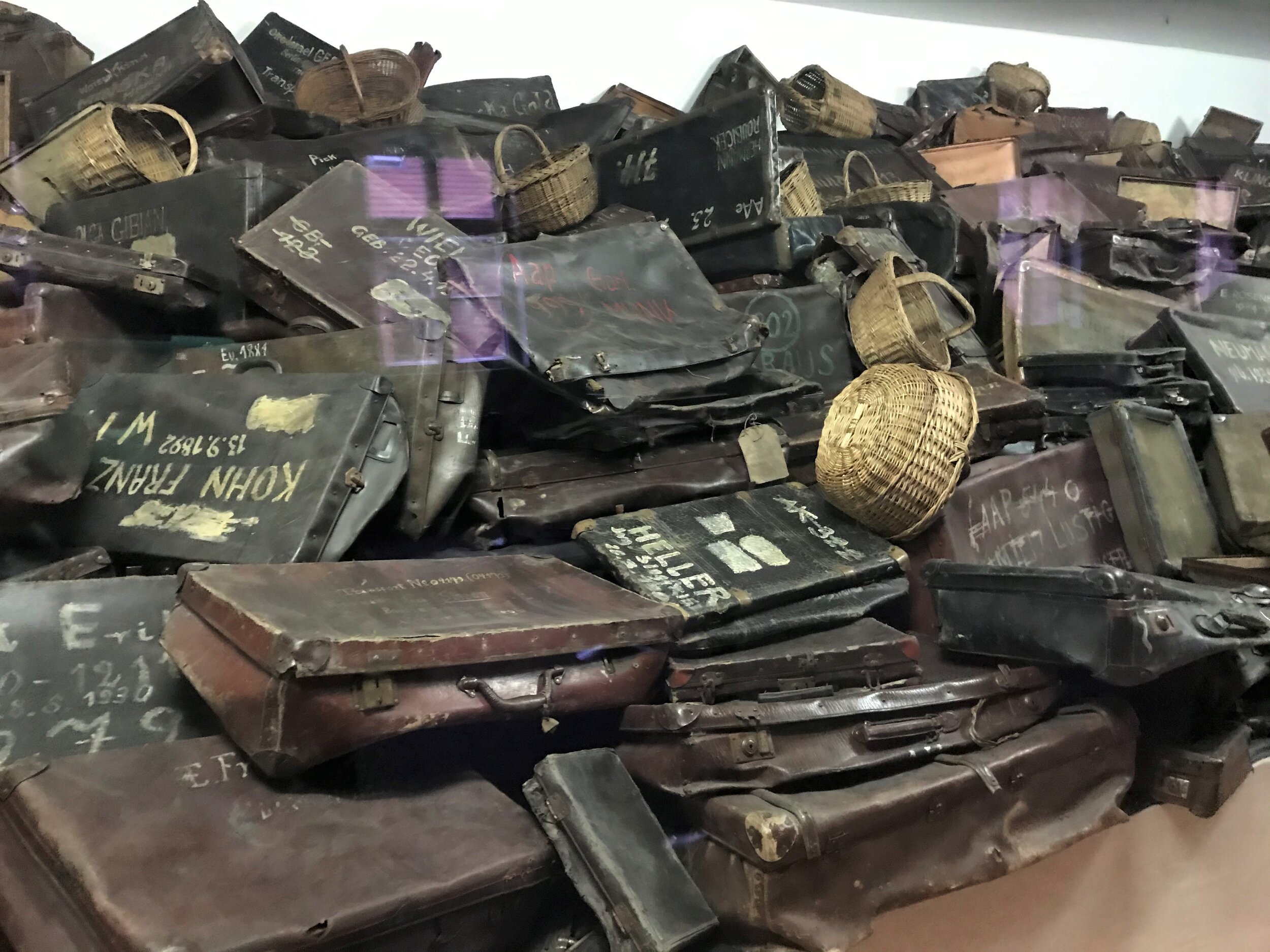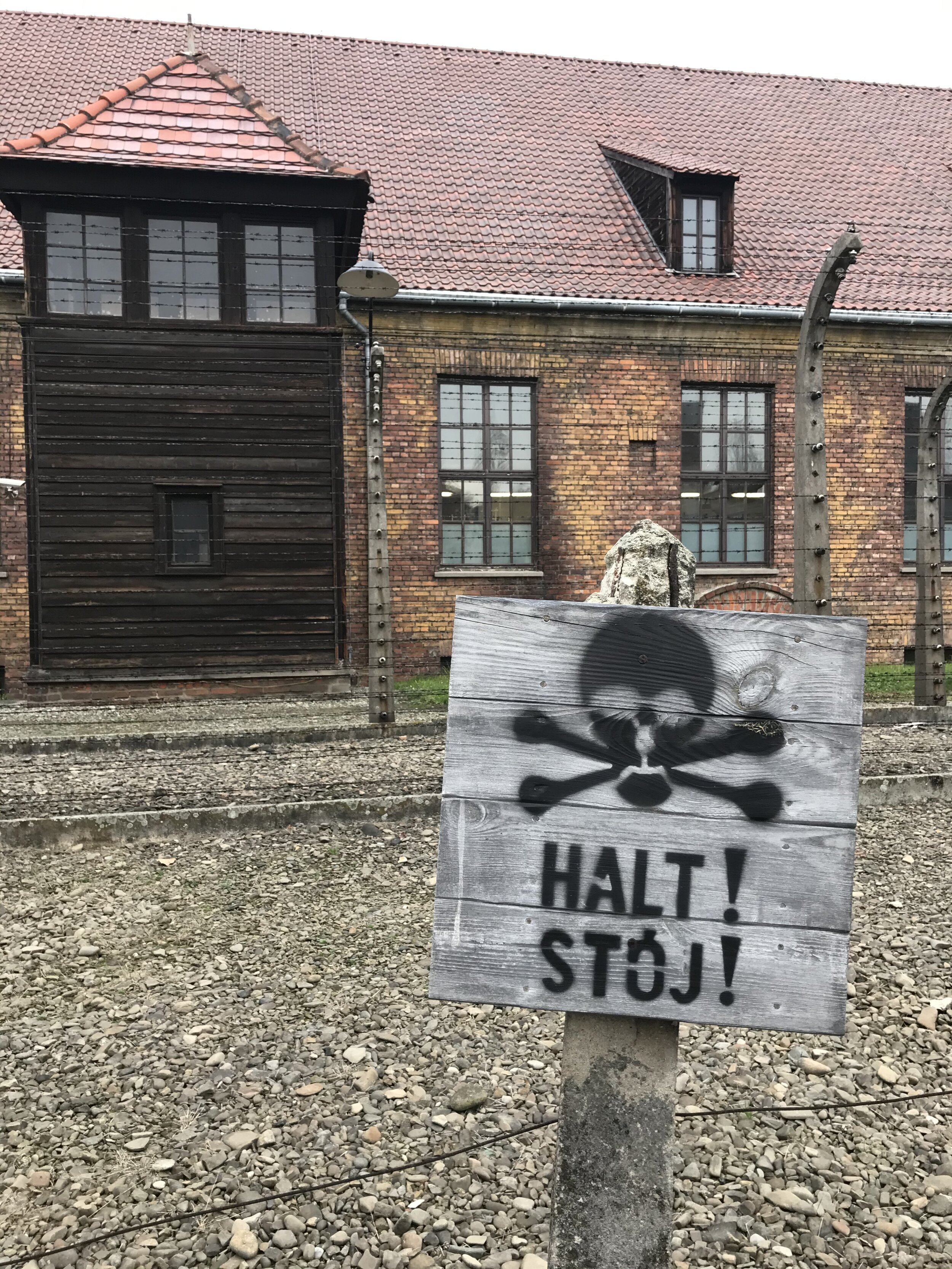Visiting Auschwitz
I’ve been contemplating how I’d share my experience of touring the Auschwitz concentration camp back in November. I could tell you how to best maximize your time on a day trip from Krakow, Poland. I could advise you on age appropriateness of the tour or what time of year is best to visit. I’ve decided I want to share with you the facts that I can’t seem to get out of my head. What happened here was atrocious. This article may not be for everyone. Please take caution when reading. I firmly believe it’s important to share so that something like this never happens again. The following post is a culmination of my tour at Auschwitz I and Birkenau, along with a few books I’ve read since returning home. All sources can be located at the bottom of the article.
Thoughts of my trip to Auschwitz…
Block 27 currently houses a book with names of the victims. You can actually trace your family history to see if you had any ancestors at the camp.
This wasn’t that long ago. It is absolutely ludicrous to think that this practice of human extermination was happening just 75 years ago. The concentration camp was freed on January 27, 1945. It’s most important to me that you realize that this massacre was not that long ago. Over 1 million people were killed at Auschwitz. That’s like wiping out the city of Austin, Texas. An estimated 6 million Jews were killed across Europe. That’s close to the entire state of Minnesota. Gone.
Why Auschwitz? What was once a military camp in Poland, would soon become the site of of the largest mass murder in the history of the world. They chose this place because it had a really good railway system to transport people to the camp from all over Europe. Hitler’s army took control of the region, renaming the camp Auschwitz. The section of Poland was now considered Germany. Unfortunately the Poles and Russians were some of the first prisoners of this concentration camp. Any person caught speaking out against the Nazi’s was in danger. Hitler had spies everywhere. He started the “work camps” as a way to concentrate all of his enemies in one place. Next on the list, the Jewish people. Jews were sent to these concentration camps from all over Europe. 25 countries agreed to send Jewish people to these camps and ghettos. In the second half of 1941, Hitler changed his mind and decided that the Jewish race must be eliminated and that’s when the mass killings started. There is no official decree or document stating this but when you visit the museum you’ll see the evidence.
How did people get there? Rail cars that were typically used to house cattle. They would pack the car so full that there was no place to sit down or rest. No water or food. They were in these rail cars for anywhere from 3-10 days before arriving at the camp. These people were at the point of extreme exhaustion by the time they arrived. No energy to even fight back if they wanted to. Surrounded by German guards, they were immediately separated for the selection process.
Selection Process Upon arrival, the camp orchestra (comprised of Jews and prisoners with musical ability) would play for the people on the selection platform as a way to keep everyone calm. The Jewish people had heard rumors that Jews were being killed in Germany. They prayed it wasn’t true. Many went into hiding like the story of Anne Frank. If they had the money, they went to America or Israel to find asylum.
Our tour at Auschwitz was 8 hours long, longer than most Jews were alive at the camp. Most Jews were killed on the first day of arrival. Living on average about 3.5 hours from the moment they arrived. They would go through the selection process and all women, children, elderly and people with disabilities would be sent in the direction of the gas chambers. Men and young people in their early twenties (women without children) were sent towards the barracks and became prisoners of the camp. Identical twins were also spared because Joseph Mengele was conducting medical experiments on them. They also sold women to a nearby Bayer aspirin plant to do medical experiments. Our guide shared a statement that will stay with me, “Auschwitz was not a place you came to live, it was a place you came to die”. If you were young and healthy upon arrival, they would keep you as a prisoner of the camp. You typically lived about 12 weeks and would die from disease, poor living conditions, starve to death or were worked to death.
Why not fight back? As we discussed, many were suffering from starvation or lack of water after their long journey to the camp. These camps and ghettos were located all over Europe. Some work camps were promising Jews that if they worked very hard they would get to go home. It was a general rule of thumb that if you ended up in Germany, you were in trouble. In a small town, scattered across Europe, the number of Jewish residents was typically very small. Sometimes there was only one Jewish family in town and everyone knew who they were. People were scared of Hitler and his soldiers. Some of the stories I read talked about young girls and boys watching their friends being taken from their homes and not even offering a smile or wave goodbye. In some cases they did fight back and even try to escape from the camp. Of the 900 people that tried to escape, only about 200 were successful. And many others were punished or even killed as retaliation for those who tried to escape. Kazimierz Piechowski was a Polish engineer and a political prisoner of the camp. He organized an escape where a few prisoners dressed in German uniforms and drove right out the main gate.
Pictured above is one of the crematoriums at Auschwitz I
Gas Chambers & Crematoriums These buildings were in plain site but the new arrivals had no idea what it was. They were told they were taking showers. The Jews were lied to all the way up until they locked the doors to the showers. Soldiers would even give the women towels to keep them calm if they were nervous. They would tell the elderly to concentrate on remembering the number above the hook where their belongings were kept as a way to distract them. The Nazis were running a business of exterminating people. They had to find ways to eliminate all the bodies after they had been gassed so they started burning people. Sometimes two at a time, one fat and one slim because they knew that human fat helped burn faster.
This really was a business. Hearing our guide talk in detail was extremely hard to receive. You may be reading some graphic content. I’m not going to share everything we learned but some of this is important for us to hear so that this never happens again. You may only remember tidbits from this article. But it’s important to share. Our brains aren’t made to process this kind of trauma in one little sitting. I could feel my brain numbing out at times during our tour, drifting off to another place or time. Our brains go through this emotional numbing as a way to retreat from a thought that’s possibly traumatic or as a way to protect from future trauma. What’s chilling is that I have to believe the people who lived, died and the few that survived their time at Auschwitz had to do the same.
It became a business of exterminating people. How fast. How many people. As the trains began to bring more and more Jews to the camp, they had to expand. Jews were coming from all over- Romania, Hungary, Holland, Norway, Greece… and many more places in Europe. They forced the prisoners to build onto Auschwitz, expanding to Auschwitz II and Birkenau. I had no idea how expansive this place was. Our tour started in Auschwitz I for the morning and then we had to take a bus to Birkenau. The total compound is 472 acres. So many Jews were arriving daily, sometimes in the thousands. They had to find ways to kill thousands of people at a time and then do something with their bodies. They had a budget. Again it was a business. When they ran out of space in the crematoriums, they started having mass bonfires in the woods near Birkenau. Until they realized this was contaminating the water source.
Walking through the museums at Auschwitz, you see the personal belongings of those killed. They have entire rooms filled with shoes of the victims. Imagine that for a minute. Walking through an entire room of shoes. All sizes. We walked through another building that was filled with suitcases. They had even written the names and birth dates of the owners, which is often how they identified the victims. Another building housed eye glasses, combs and other personal care items. This was a business. They did everything they could to liquidate and monetize the situation. They sold all valuable belongings that the Jews were told to bring with them to their “temporary work camp placement”. They even shaved the heads of women because their hair could be sold for materials and enterprise.
Joseph Mengele’s identical twins This German doctor conducted medical experiments on Jewish twins. We toured a barracks that was for the children that lived at Birkenau. We know that out of the 200,000 children that arrived to the camp, only about 700 survived. They walked over a mile to the clinic every day located in Block 10 of Auschwitz I. He had no regard for the people he conducted these experiments on. I purchased a book written by a twin who survived Auschwitz. I’ll link it in the resource below. Mengele never had to answer for these crimes. In 1949 he fled to Brazil, evading capture from the many parties that wanted him to go on trial.
Bunks were stacked 3 high. There was a hierarchy for who slept in what bunk. The bottom bunks were the worst conditions with rats as large as cats.
Daily life for prisoners of the camp Role call, work, sleep. Visiting Auschwitz gives you a whole new perspective on the daily comforts we take for granted. For example, dinner for most people was a small piece of bread. If you were caught stealing someone else’s piece of bread you were killed. This could be life threatening to the severely malnourished prisoner you stole from. The conditions at the camp were brutal but winter time was the worst. Night time temperatures got down to -12 degrees. The guards would order prisoners to shower in the middle of the night. Showering once every 6 months was not uncommon. If they drew your card in the winter, it was a threat to your life as they made you strip down and walk to the showers naked in this cold weather. You also had to walk back soaking wet. The prisoners were given numbers to completely dehumanize the experience for the prisoner and also for the German officer. They were not called by name. If the prisoners survived they weighed about 55 lbs. They had to learn to walk again and how to eat food.
Finally, liberation of the camp. January 27, 2020 will commemorate 75 years since the liberation of Auschwitz. In early January, the Nazi’s knew they were caught but they continued to kill people. They conducted “death marches” where they forced the prisoners to walk 25 miles to a nearby town in order to catch a train to another concentration camp. This was also their attempt to destroy any evidence of crimes against humanity. They even bombed their crematoriums at Birkenau and started to disassemble the living barracks, liquidating their assets. Those who were too weak to make the march were left for dead at the camp. They would live there for a few more months, using the wood from the disassembled barracks to stay warm. After WWII, the Russians insisted that Germany give back this region of land to Poland because of the early persecution of Polish people.
In closing, I’d like to thank you for reading this article. Visiting Auschwitz was an incredibly meaningful travel experience. I’d recommend starting with a 4 hour tour as 8 hours was very intense. Even the tour guides take a few days off after a tour because it’s so emotionally involved. They work on editing materials or reviewing new exhibits in the meantime. Their dedication to telling the victim’s story is nothing short of amazing. It’s a terrible story to tell but it’s a part of our shared history of this world. Most all people, even Americans, knew what was happening in these camps and that’s one reason we joined the war.
You hear so many stats that after awhile, the numbers become just numbers. We have to remember the victims. Maybe you remember Kazimierz’s heroic escape or Eva Kor’s survival story after being subject of Mengele’s medical experiments. Not a single person killed (out of 6 million people) was offered a funeral or a proper burial. We have to remember the survivor’s families. Think of how enduring this kind of torture AND surviving would change your life and your family’s life. Trauma lives on through generations. If you feel inspired to learn more from the survivors, I’m going to leave you with a few resources. I’d also like to thank our tour guide Patricia for her amazing work and Ernest for helping organize.
Lastly, should you decide you’d like to visit this historical destination I’m happy to assist you in your travel planning needs. After having visited this country- I’m inclined to return myself. The people were friendly, it was very affordable and has tons of history to experience.
Resources
Music Performance at Auschwitz https://www.cbsnews.com/news/holocaust-prisoners-in-nazi-concentration-camps-made-music-now-being-discovered-and-performed-60-minutes-2019-12-15/
Escape from Auschwitz- Kazimierz Piechowski story https://www.independent.co.uk/news/obituaries/kazimierz-piechowski-auschwitz-escape-survivor-ss-guard-steal-commandant-car-poland-nazi-holocaust-a8117071.html
Growing up Brutalized by Hitler https://www.inforum.com/community/history/4829536-Growing-up-brutalized-in-Hitlers-Germany-Walcott-woman-says-my-life-began-here?fbclid=IwAR3C2F-myp905TuHpwrKf2-EOlstB7k4ocUx8kR-P2QkrOFKZGj9XLJgbAQ
Books for reference:
Surviving the Angel of Death https://www.amazon.com/Surviving-Angel-Death-Mengele-Auschwitz/dp/1933718579
The Tattooist of Auschwitz https://www.amazon.com/Tattooist-Auschwitz-heart-breaking-unforgettable-international-ebook/dp/B074CG2SGV
Anne Frank: The Diary of a Young Girl https://www.amazon.com/Anne-Frank-Diary-Young-Girl/dp/0553296981
Auschwitz-Birkenau. Then and now pictures https://www.amazon.com/Auschwitz-Birkenau-Place-Where-You-Standing/dp/8377040352




